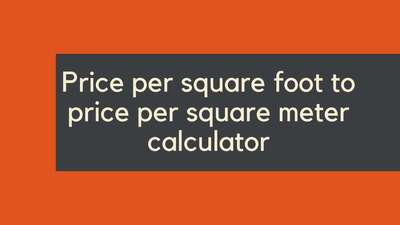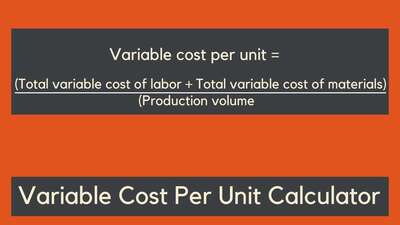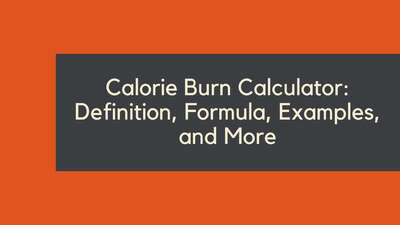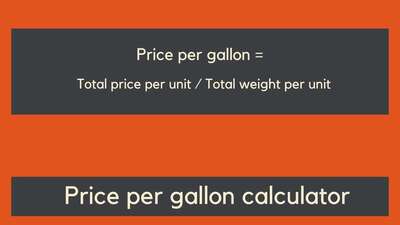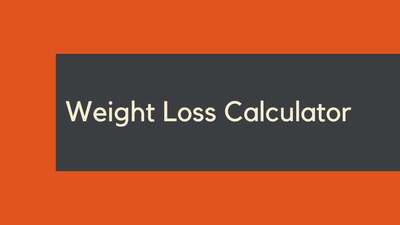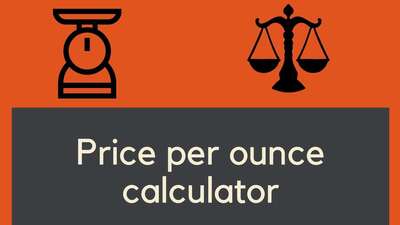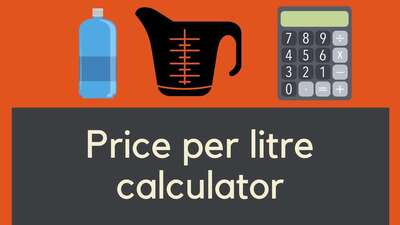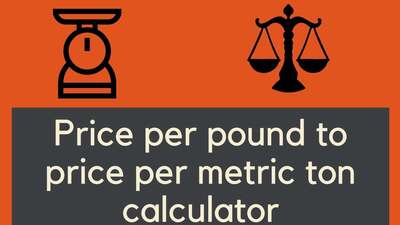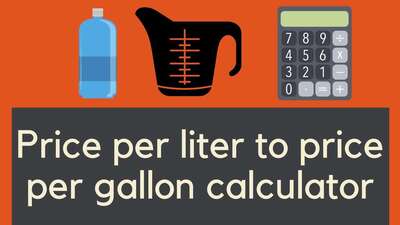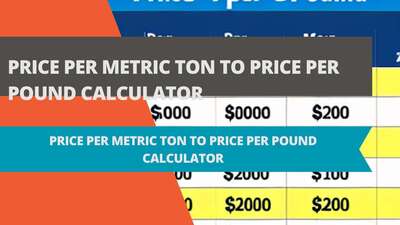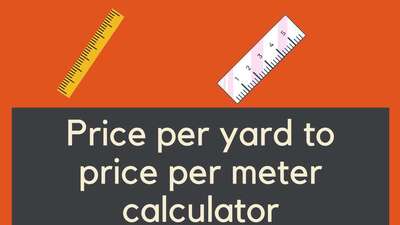Body Fat Calculator: Definition, Formula, Examples, and FAQ

- Understanding Body Fat Calculators
- How Body Fat Calculators Function
- Variety of Available Tools
- Formula for Body Fat Calculator
- Examples of Body Fat Calculators
- Advancements in Body Fat Measurement Techniques
- Interpreting Body Fat Calculator Results
- The Role of Diet and Exercise in Body Fat Reduction
- Body Fat Distribution and Health Risks
- Frequently Asked Questions on Body Fat Calculators
- Explanation of Body Fat Calculator
- FAQs on Body Fat Calculators
When it comes to health and fitness, one of the most important factors to consider is body fat percentage. Knowing your body fat percentage can help you determine your overall health, assess your fitness level, and track your progress in achieving your health and fitness goals. However, measuring body fat percentage accurately can be challenging without the proper tools and knowledge. That's where a body fat calculator comes in handy. In this article, we'll cover everything you need to know about body fat calculators, including the definition, formula, examples, and FAQ.
Understanding Body Fat Calculators
The term Body Fat Calculator refers to a device or application designed to gauge the amount of body fat a person has. It's a pivotal tool for anyone looking to monitor their health and fitness progression.
How Body Fat Calculators Function
These calculators function by analyzing key physical metrics. By entering details such as gender, age, height, weight, and waist circumference, individuals can receive an estimate of their body fat percentage. This information is crucial for designing fitness regimes or diet plans tailored to individual needs.
Variety of Available Tools
The market offers a broad spectrum of body fat calculators, ranging from digital solutions like online calculators to more tangible options such as handheld devices. Additionally, there are scales equipped with body fat assessment features, providing convenience for those who prefer a quick check-up at home.
Formula for Body Fat Calculator
The formula used to calculate body fat percentage varies depending on the type of body fat calculator used. However, most body fat calculators use a combination of measurements, such as height, weight, and waist circumference, to estimate body fat percentage. The most common formula used is the U.S. Navy method, which uses the following equation:
Body Fat Percentage = (495 / (1.0324 - 0.19077(log(waist - neck)) + 0.15456(log(height))) - 450)
This formula is specific to the U.S. Navy method and may not be accurate for all individuals. Other methods may use different equations or factors to estimate body fat percentage.
Examples of Body Fat Calculators
When it comes to measuring body fat, there's no shortage of tools tailored to fit different preferences and requirements. For instance, the Calculator Body Fat Calculator is popular for its user-friendly interface and quick results.
Another reliable option is the Calculator, which stands out due to its comprehensive approach, taking into account a variety of body measurements.
For those seeking more detailed analysis, the HealthStatus Body Fat Percentage Calculator offers an in-depth look at one's body fat distribution using multiple data points.
Each of these calculators requires inputs such as height, weight, gender, age, and waist circumference. Some might ask for additional details, like neck or hip measurements, to enhance accuracy. It's the amalgamation of these individual details that allows for a personalized estimate of body fat percentage.
Advancements in Body Fat Measurement Techniques
The progression of technology has remarkably refined the techniques used to measure body fat. Moving past the traditional use of calipers and bioelectrical impedance analysis (BIA), the field has embraced more sophisticated methods.
Notably, Dual-Energy X-ray Absorptiometry (DEXA) scans and 3D body scanners have emerged, offering significantly more precise measurements of body composition. Initially, these advanced tools were primarily utilized within clinical and research settings, providing detailed insights into body composition.
However, these state-of-the-art techniques are steadily becoming more mainstream, now reaching fitness aficionados who are eager for comprehensive analyses of their physical health. The granularity of data provided by these methods marks a significant leap from standard calculators, potentially altering how accuracy in body fat measurement is perceived and achieved.
Interpreting Body Fat Calculator Results
Comprehending the output of a body fat calculator is vital for establishing attainable health and fitness objectives. Various body fat percentages signify different health statuses, extending from essential fat necessary for bodily function to levels considered obese, which may pose health risks.
This section aims to delineate the spectrum of body fat categories and their implications for an individual's health. The impact of muscle mass and the distribution of fat across the body are pivotal factors that can affect the interpretation of body fat percentage results.
For instance, individuals with higher muscle mass may have a higher body weight, yet a healthier body composition. Conversely, the accumulation of fat in certain areas, such as the abdominal region, is often associated with higher health risks, even at lower overall body fat percentages.
Given these nuances, body fat calculators should ideally be utilized as a benchmark or reference point — a guide to inform health assessments rather than a definitive metric. This approach underscores the importance of a comprehensive health evaluation that considers body composition alongside other vital health indicators.
The Role of Diet and Exercise in Body Fat Reduction
Although body fat calculators give a quick indication of your current body fat status, the core of changing your body composition lies in the synergy of diet and exercise. A balanced diet and calorie management are crucial for reducing excess body fat. The types of nutrients consumed, along with their quantities, play a substantial role in dictating body fat changes.
Alongside dietary habits, various forms of physical activity significantly contribute to body fat loss. Strength training is particularly effective at building lean muscle mass, which can increase basal metabolic rate and enhance fat burning. Similarly, cardiovascular exercises are key for expending calories and improving overall cardiovascular health.
Moreover, the impact of consistent, long-term adherence to dietary and exercise regimens cannot be overstated. Consistency and patience are the bedrocks of sustainable body fat reduction, with results accruing over time rather than overnight. It's this ongoing commitment to healthful living that ultimately shapes and maintains a leaner physique.
Body Fat Distribution and Health Risks
An essential aspect of body composition to consider is the distribution of body fat. Not all fat is created equal, nor is it distributed uniformly across the body. The location of fat storage can be just as critical as the quantity when it comes to health implications.
There are two main types of body fat: subcutaneous fat, which resides under the skin, and visceral fat, which surrounds the internal organs. While subcutaneous fat can be aesthetically displeasing, it's the visceral fat that is more concerning from a health perspective.
Visceral fat is particularly insidious due to its association with numerous health risks, including cardiovascular disease, type 2 diabetes, and certain types of cancer. This is why body fat calculators that measure waist circumference are invaluable—they not only estimate total body fat but also give insights into the potential risk of health complications associated with fat distribution.
Therefore, understanding the nuances of body fat distribution is pivotal when evaluating health risks and the effectiveness of health and fitness regimens. This knowledge empowers individuals to make more informed decisions about their lifestyle choices and health strategies.
Frequently Asked Questions on Body Fat Calculators
The journey to understanding and utilizing body fat calculators often comes with a variety of questions. This FAQ section aims to tackle some of the most common inquiries to assist readers in accurately tracking their progress and making informed decisions.
How often should I measure my body fat?
For consistency and tracking improvements over time, it's recommended to measure body fat on a regular basis. A bi-weekly or monthly schedule can help observe trends without daily fluctuations causing confusion.
What is the best time of day to take body fat measurements?
Measurements should ideally be taken at the same time of day under similar conditions each time. Many choose to measure in the morning before eating or drinking to minimize variables that could affect the accuracy of the results.
Does hydration affect body fat calculator accuracy?
Yes, hydration levels can impact the results, especially with calculators using bioelectrical impedance analysis. Being well-hydrated is important for accurate readings, as water conducts electrical signals used in this type of measurement.
Which body fat calculator is best for me?
Selecting a body fat calculator depends on several factors including accessibility, ease of use, and desired level of accuracy. Consider what measurements you're willing to take, whether you prefer a quick estimate or a more detailed analysis, and if you're looking for tracking capabilities.
These FAQs provide a starting point for utilizing body fat calculators effectively. However, for personalized advice and accuracy, consulting with health professionals is always recommended.
Explanation of Body Fat Calculator
Body fat calculators use a variety of factors and equations to estimate an individual's body fat percentage. The U.S. Navy method, which is the most common method used, takes into account an individual's height, weight, and waist circumference to estimate body fat percentage. Other methods may use different equations or factors, such as age, gender, hip circumference, or neck circumference, to provide a more accurate estimate.
Body fat percentage is an important factor to consider when it comes to health and fitness. A high body fat percentage can increase the risk of health problems, such as heart disease, diabetes, and stroke. On the other hand, a low body fat percentage can indicate a healthy weight and fitness level.
FAQs on Body Fat Calculators
What is a body fat calculator?
A body fat calculator is a tool used to estimate the percentage of body fat in an individual's body. This tool takes into account various factors, such as gender, age, height, weight, and waist circumference, to calculate an estimate of an individual's body fat percentage.
How does a body fat calculator work?
A body fat calculator works by using various measurements and equations to estimate an individual's body fat percentage. The most common method used is the U.S. Navy method, which takes into account an individual's height, weight, and waist circumference to estimate body fat percentage. Other methods may use different equations or factors, such as age, gender, hip circumference, or neck circumference, to provide a more accurate estimate.
What is a healthy body fat percentage?
A healthy body fat percentage varies depending on an individual's age, gender, and fitness level. Generally, a healthy body fat percentage for men is between 6% and 24%, and for women, it is between 16% and 30%. However, these ranges can vary based on individual factors.
How can I reduce my body fat percentage?
Reducing body fat percentage involves a combination of healthy eating habits and regular exercise. Incorporating strength training and cardio into your exercise routine can help burn fat and build muscle. Eating a balanced diet with plenty of fruits, vegetables, lean protein, and whole grains can also help reduce body fat percentage.
Is a body fat calculator accurate?
The accuracy of a body fat calculator depends on the type of calculator used and the factors and equations it takes into account. Some calculators may provide more accurate estimates than others, but none are 100% accurate. For the most accurate measurement, consider consulting with a healthcare professional or using more advanced methods, such as a DEXA scan.





![Car Loan Calculator: Definition, Formula, Examples, and FAQs [2023 Guide]](/images/page/400/car-loan-calculator-13.jpg)
